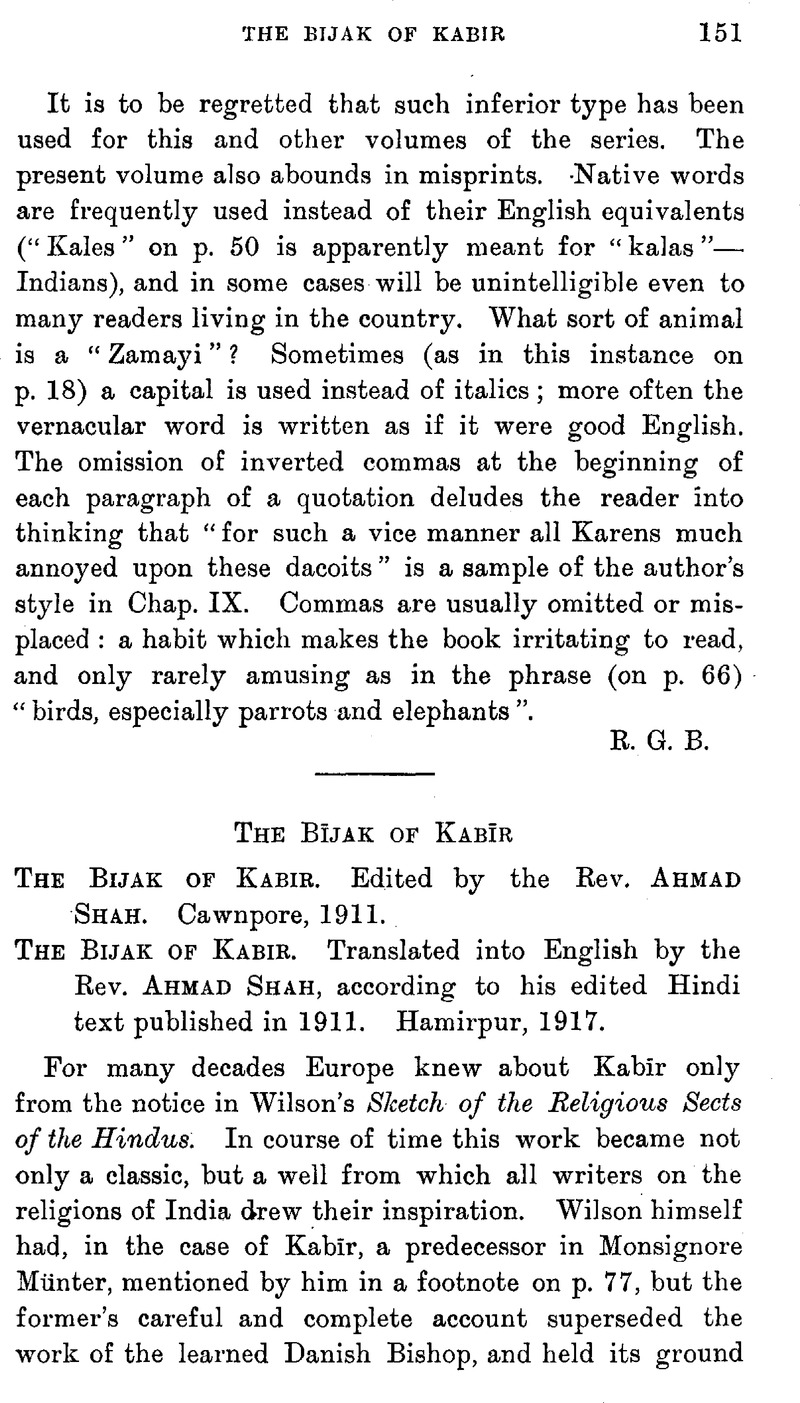No CrossRef data available.
Published online by Cambridge University Press: 15 March 2011

page 152 note 1 Reviewed in JRAS. for 1908, pp. 245 ff.Google Scholar
page 152 note 2 MrShah, Ahmad states (Intro., p. 29)Google Scholar that Kabīr wrote in the language spoken in the neighbourhood of Benares, Mirzāpur, and Gōrakhpur, but I am sure that this is a mistake. The language of Benares, Gōrakhpur, and East Mirzāpur is one form or another of the Bhojpurī dialect of Bihārī, and there is not a single form typical of this language in the Bījak. Really it is in old Awadhī, the language spoken in West Mirzāpur, Allahabad, and Audh. He himself says (Sākhī 194)Google Scholar, “My speech is of the East (Pūrb); no one can understand me.” But any dialect spoken east of Braj Bhākhā is called, “Eastern” in Northern India. The language of Tulasī Dāsa, which is pure Awadhī, is styled “Old Pūrbī” by Kellogg.
page 152 note 3 See Shah, Ahmad, Trans., Intro., p. 29.Google Scholar
page 153 note 1 Shah, Ahmad, Intro., p. 31.Google Scholar
page 153 note 2 Kāma jo āwai kāmārī, kā lai karai kum ![]() ca. Dōhâvalī, 572.Google Scholar
ca. Dōhâvalī, 572.Google Scholar
page 153 note 3 A Ramaiṇī consists of an indefinite number of caupāīs followed by a dōhā, called the Sākhī. Most of the Śabdas are in lalita metre without any Sākhī.
page 153 note 4 Apart from its doctrinal contents, this is interesting as showing the nomenclature of the letters in Kabīr's time. It closely resembles that used for the Gurmukhī alphabet at the present day. Ka is named kakā, kha, is named khakhā, and so on.
page 153 note 5 Not Kahāras, as stated by Wilson.
page 156 note 1 Wilson, , p. 68.Google Scholar
page 156 note 2 On the traces of Christian influence in Kabīr's teaching, see Paṇḍit Bēcar, Wāljī's Kabīr-caritra, Surat, 1881.Google Scholar The Paṇḍit has gone too far in maintaining that the Kabīr-panth was actually instituted by Jesuits, but most of the borrowings from Christianity cited by him admit of little doubt.
page 160 note 1 An extreme instance is agayan on p. 185. Here the text gives no help, and I am unable to identify the word.